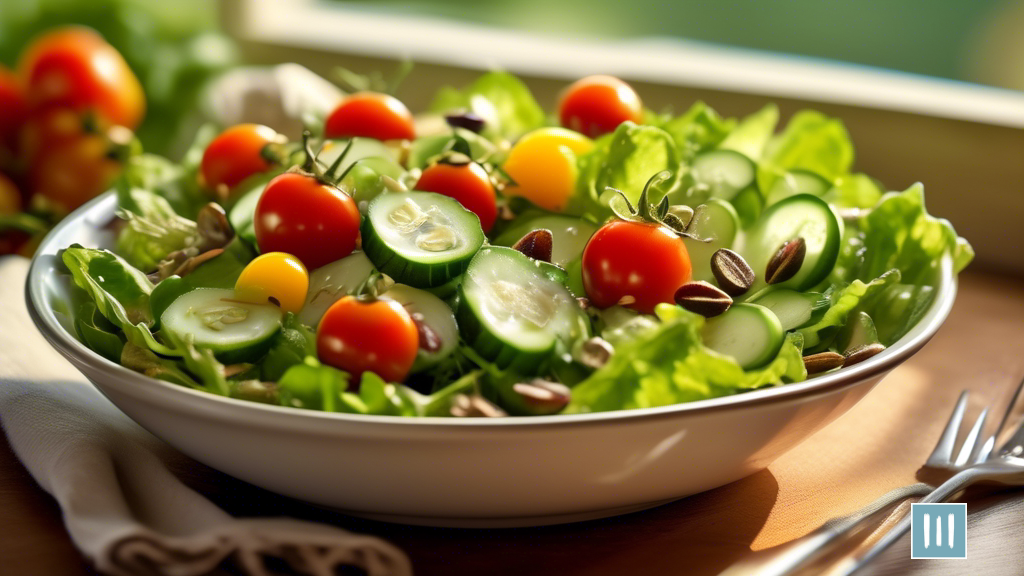Are you looking to shed those extra pounds and achieve your weight loss goals? One of the most effective strategies for successful weight loss is mastering portion control. By understanding how much food you should be consuming and implementing mindful eating techniques, you can take control of your eating habits and make significant progress towards your weight loss journey.
In this article, we will guide you through the process of mastering portion control for weight loss. We will start by explaining the importance of understanding portion sizes and how they contribute to your overall calorie intake. You will learn about mindful eating techniques that will help you develop a healthier relationship with food and prevent overeating. Additionally, we will discuss the use of visual cues to control portions and introduce you to various portion control tools and strategies that can be incorporated into your daily routine.
By the end of this article, you will have a clear understanding of how to create a sustainable portion control plan that will not only help you lose weight but also promote a healthier and happier lifestyle. So let’s dive in and start your journey towards mastering portion control for weight loss!
Key Takeaways
- Including a variety of vegetables in your meals, such as salad greens and roasted vegetables, can help you feel fuller with fewer calories.
- Choosing lean protein sources, like grilled chicken and salmon, can help keep you satisfied and support weight loss.
- Being mindful of portion sizes, such as using a quarter cup of dressing or a half cup of quinoa, can help control calorie intake.
- Incorporating snacks that combine protein and fiber, like Greek yogurt and granola or an orange and string cheese, can help keep you energized and prevent overeating.
Understanding Portion Sizes
Did you know that understanding portion sizes is key to mastering portion control for weight loss? When it comes to weight loss, it’s not just about what you eat, but how much you eat. Portion sizes can be deceiving, and it’s easy to consume more calories than you realize. By understanding portion sizes, you can take control of your eating habits and make healthier choices.
One way to understand portion sizes is to use visual cues. For example, a serving of protein, like chicken or fish, should be about the size of your palm. A serving of carbohydrates, like rice or pasta, should be about the size of your fist. By using these visual cues, you can easily estimate the right amount of food to eat without having to measure everything.
Another important aspect of understanding portion sizes is knowing the difference between serving sizes and portion sizes. Serving sizes are standardized amounts listed on food labels, while portion sizes are the amounts we actually eat. It’s common for portion sizes to be much larger than serving sizes, especially when dining out. By being aware of this, you can make conscious decisions to eat smaller portions or save leftovers for later. By practicing portion control, you can still enjoy your favorite foods while working towards your weight loss goals. So take the time to educate yourself on portion sizes and make serving others a priority – starting with yourself.
Mindful Eating Techniques
To improve your eating habits, try practicing mindful eating techniques, like taking smaller bites and chewing slowly, which can lead to a 30% reduction in overall calorie intake. Mindful eating is all about being present in the moment and fully experiencing the taste, texture, and aroma of your food. By slowing down and savoring each bite, you can better recognize when you are truly satisfied and prevent overeating. Additionally, being mindful of portion sizes can help you maintain a healthy weight and prevent weight gain.
One way to practice mindful eating is by using a smaller plate or bowl. This simple trick can make your portions appear larger, tricking your mind into thinking you are eating more than you actually are. Another technique is to pay attention to your hunger and fullness cues. Before you start eating, ask yourself if you are truly hungry or if you are eating out of boredom or emotions. During your meal, check in with yourself periodically to see if you are still hungry or if you are satisfied. This can help you avoid mindless snacking and unnecessary overeating.
To further assist you in mastering portion control, here is a helpful table outlining appropriate portion sizes for common foods:
| Food Group | Portion Size |
|---|---|
| Protein | 3 ounces |
| Grains | 1/2 cup |
| Vegetables | 1 cup |
Using Visual Cues to Control Portions
Imagine using visual cues like smaller plates and bowls to help you control your portions effortlessly. By simply swapping out your larger dinner plates and bowls for smaller ones, you can trick your mind into thinking you’re eating more than you actually are.
This is because our brains are wired to associate the size of our plate with how much food we need to feel satisfied. So, when you use a smaller plate, your brain automatically thinks you’re getting a full meal, even if the portions are smaller. It’s a simple and effective way to reduce your calorie intake without feeling deprived. Not only can smaller plates and bowls help you control your portions, but they can also make your meals more visually appealing. When you serve yourself on a smaller plate, you’ll notice that the food looks more abundant and satisfying.
This can give you a sense of satisfaction and prevent you from feeling like you’re on a restrictive diet. Plus, using smaller plates and bowls can make it easier to practice portion control when serving others. You can still serve generous portions, but the smaller plate will naturally limit the amount of food you’re serving. It’s a win-win situation for everyone involved. So, why not give it a try and see how visual cues can help you master portion control effortlessly?
Portion Control Tools and Strategies
By using handy portion control tools and implementing effective strategies, you can easily keep your eating habits in check and stay on track with your health goals. One of the most helpful tools for portion control is a food scale. This handy device allows you to accurately measure the weight of your food, ensuring that you’re eating the appropriate portion size. Simply place your food on the scale, and it’ll tell you exactly how much you’re consuming. This can be especially helpful for foods that are easy to overeat, such as pasta or nuts.
Another useful tool is a portion control plate or bowl. These dishes are divided into sections, making it easy to visualize and control your portion sizes. By filling each section with the appropriate amount of food, you can ensure that you’re eating a balanced meal while also keeping your portions in check. Additionally, using smaller plates and bowls can trick your mind into thinking that you’re eating more than you actually are, helping you feel satisfied with smaller portions.
In addition to using portion control tools, there are also several strategies you can implement to help control your portions. One effective strategy is to pre-portion your meals and snacks. By taking the time to portion out your food ahead of time, you can avoid mindlessly overeating and ensure that you’re eating the appropriate amount.
You can also try using smaller utensils, such as a teaspoon or salad fork, to eat your meals. This can help slow down your eating and make you more aware of your portion sizes. Another helpful strategy is to practice mindful eating. This involves paying attention to your body’s hunger and fullness cues and eating until you’re satisfied, rather than until you’re overly full. By being present and mindful during your meals, you can better control your portions and make healthier choices.
Creating a Sustainable Portion Control Plan
Achieving a sustainable portion control plan is all about finding a balance that works for you and your lifestyle. It’s important to create a plan that is not only effective in helping you reach your weight loss goals, but also one that you can maintain in the long run. To do this, it’s helpful to take a look at your current eating habits and identify areas where you may be consuming more than necessary.
One strategy is to divide your plate into two sections: one for vegetables and one for protein and carbohydrates. This visual representation can help you ensure that you are getting a balanced meal. Additionally, using smaller plates and bowls can trick your mind into thinking you are eating more than you actually are.
Here is an example of a portion control plan that you can customize to fit your needs and preferences:
| Meal | Portion Size |
|---|---|
| Breakfast | 1 cup of oatmeal, 1 tablespoon of peanut butter, 1/2 banana |
| Snack | 1 small apple, 10 almonds |
| Lunch | 2 cups of salad greens, 4 ounces of grilled chicken, 1/4 cup of dressing |
| Snack | 1/2 cup of Greek yogurt, 1/4 cup of granola |
| Dinner | 4 ounces of salmon, 1 cup of roasted vegetables, 1/2 cup of quinoa |
| Snack | 1 small orange, 1 string cheese |
Frequently Asked Questions
Can portion control alone help me lose weight, or do I also need to incorporate exercise?
Yes, portion control alone can help you lose weight. However, incorporating exercise will accelerate your results and improve your overall health. It’s a winning combination that will make you feel great and achieve your weight loss goals faster!
Are there any specific foods that I should avoid or limit when practicing portion control?
When it comes to portion control, it’s important to limit foods that can sabotage your goals. Avoid those oh-so-tempting, calorie-laden goodies that make your taste buds dance and your waistline expand.
How can I handle social situations or dining out while still maintaining portion control?
When dining out or in social situations, stick to these tips to maintain portion control: choose smaller plates, share dishes, ask for dressings and sauces on the side, and listen to your body’s hunger cues.
Is it necessary to track and count calories in order to effectively practice portion control?
No, it’s not necessary to track and count calories to practice portion control effectively. Instead, focus on mindful eating, listening to your body’s hunger and fullness cues, and choosing nutrient-dense foods.
How long does it typically take to see results from practicing portion control?
You’re probably wondering how long it takes to see results from practicing portion control. Well, let me tell you, it’s not like a magic potion that works overnight. It takes time, consistency, and patience. But trust me, it’s worth it in the end!

















